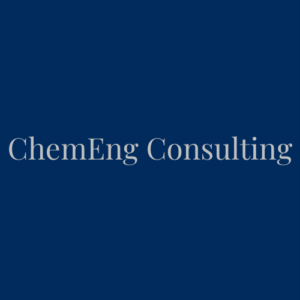Why Specialty Chemicals are Outpacing Commodity Chemicals: An Industry Analysis
Introduction
The global chemical industry continues to evolve, with specialty chemicals emerging as the clear growth leader compared to traditional commodity chemicals. This divergence represents a fundamental shift in the chemical manufacturing landscape, driven by changing market demands, technological advancements, and evolving consumer preferences. Industry data shows specialty chemicals growing at 5-6% annually, compared to just 2-3% for commodity chemicals. This article examines the key factors driving this growth differential and explores the implications for industry stakeholders.
Higher Profit Margins: The Economic Advantage
Specialty chemicals command significantly higher profit margins than their commodity counterparts—a primary driver behind their accelerated growth. While commodity chemicals typically operate on razor-thin margins of 5-10%, specialty products routinely achieve margins of 15-30% or higher.
This margin differential stems from several factors:
- Value-based pricing: Specialty chemicals are priced based on the value they deliver rather than production costs alone
- Limited competition: Higher barriers to entry and proprietary formulations reduce competitive pressure
- Customer stickiness: Once integrated into customer processes, specialty chemicals create switching costs that support premium pricing
For example, Evonik Industries reports EBITDA margins of 18-20% for its specialty additives segment, compared to just 8-10% for its commodity-focused performance materials division. Similarly, Clariant has strategically divested commodity businesses to focus on higher-margin specialty segments, resulting in overall margin improvement of approximately 300 basis points.
Innovation as a Growth Catalyst
Innovation represents perhaps the most powerful growth driver in specialty chemicals. Unlike commodity chemicals, where process innovation dominates, specialty chemicals thrive on product innovation and customization.
Key innovation trends include:
- Sustainable chemistry: Bio-based surfactants, green solvents, and renewable feedstocks
- Precision formulation: Tailored solutions addressing specific customer requirements
- Digitalization: Advanced analytics driving formulation optimization and customer-specific performance
The innovation premium is evident in R&D investment patterns. Leading specialty chemical companies invest 3-5% of revenue in R&D, compared to just 1-2% for commodity-focused producers. Solvay, for instance, directs over 80% of its research budget toward specialty segments, resulting in new product introduction rates three times higher than in its commodity businesses.
Demand from End-Use Industries
Specialty chemicals growth is further fueled by robust demand from high-growth end-use industries. Unlike commodity chemicals that serve broader markets, specialty products target specific applications where performance requirements are increasingly stringent.
High-growth end markets include:
Electronics and Semiconductor Manufacturing
The semiconductor industry’s rapid expansion has created substantial demand for electronic-grade specialty chemicals. High-purity etching chemicals, photoresists, and CMP slurries are essential for manufacturing advanced microchips. With the global semiconductor market projected to reach $1 trillion by 2030, specialty chemicals suppliers to this sector enjoy compound annual growth rates of 8-10%.
Healthcare and Pharmaceuticals
Pharmaceutical excipients, biocompatible polymers, and advanced drug delivery systems represent high-value specialty chemical categories growing at 6-8% annually. Companies like Roquette and DuPont have developed specialized excipients that enhance drug bioavailability, creating value that justifies premium pricing.
Advanced Materials
The push for lighter, stronger, and more sustainable materials has accelerated demand for engineering polymers, composite materials, and performance additives. Electric vehicles, for instance, require 2-3 times more specialty chemicals per vehicle than traditional internal combustion engines.
Examples of High-Growth Specialty Chemical Products
1. Electronic Chemicals
Market leader Entegris supplies ultra-high-purity process chemicals critical for semiconductor manufacturing, growing at approximately 12% annually. Their proprietary filtration and purification technologies enable production of chemicals with impurity levels below one part per trillion—essential for advanced chip manufacturing.
2. Advanced Coatings
Companies like PPG Industries and AkzoNobel have developed waterborne and powder coating technologies that reduce VOC emissions while improving performance characteristics. These environmentally friendly alternatives command price premiums of 15-25% over conventional solvent-based systems.
3. Specialty Enzymes
Industrial biotechnology represents a rapidly growing specialty chemical segment. Novozymes, the market leader in industrial enzymes, has developed specialized catalysts that enable more sustainable production processes across industries. Their detergent enzymes allow washing at lower temperatures, while their biofuel enzymes increase yield in renewable fuel production.
4. Performance Polymers
High-performance polymers like PEEK (polyether ether ketone) and liquid crystal polymers command prices up to 20 times higher than commodity plastics. Victrex and Solvay dominate this segment, providing materials critical for aerospace, automotive, and medical device applications where performance requirements justify the premium pricing.
Strategic Implications for Industry Participants
The divergent growth trajectories of specialty and commodity chemicals carry significant strategic implications:
- Portfolio transformation: Major chemical companies are actively rebalancing portfolios toward specialty segments
- M&A activity: Acquisition of specialty chemical companies commands premium multiples
- Geographic expansion: Specialty chemical growth is particularly strong in emerging markets with expanding manufacturing bases
Conclusion
The superior growth of specialty chemicals relative to commodity chemicals reflects fundamental shifts in the global chemical industry. Higher margins, innovation-driven product development, and growing demand from advanced manufacturing sectors all contribute to this trend.
For chemical industry consultants, understanding this dichotomy is essential when advising clients on portfolio strategy, capital allocation, and long-term positioning. Companies that successfully pivot toward specialty segments while maintaining operational excellence stand to capture disproportionate value in this evolving landscape.
While commodity chemicals will remain the industry’s foundation, specialty chemicals represent its future—delivering both growth and profitability in an increasingly competitive global market.
Keywords: specialty chemicals growth, chemical industry trends, specialty vs commodity chemicals, high-margin chemical products, pharmaceutical excipients, electronic chemicals, advanced materials
